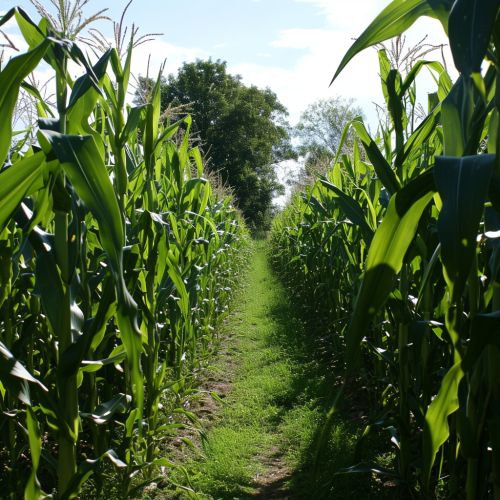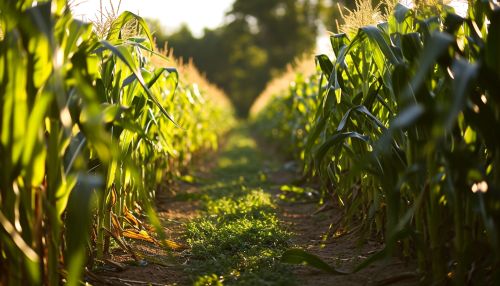Corn
Introduction
Corn, also known as maize (read more), is a cereal grain first domesticated by indigenous peoples in southern Mexico about 10,000 years ago. The leafy stalk of the plant produces pollen inflorescences and separate ovuliferous inflorescences called ears that yield kernels or seeds, which are fruits.
Etymology and Names
The word "corn" outside North America, Australia, and New Zealand refers to any cereal crop, its meaning understood to vary geographically to refer to the local staple. In the United States, Canada, Australia, and New Zealand, corn primarily means maize; this usage started as a shortening of "Indian corn". "Indian corn" primarily means maize (the staple grain of indigenous Americans), but can refer more specifically to multicolored "flint corn" used for decoration.
History
Maize is the most widely grown grain crop throughout the Americas, with 361 million metric tons grown in the United States in 2014 (Production table). Approximately 40% of the crop—130 million tons—is used for corn ethanol. Genetically modified maize made up 85% of the maize planted in the United States in 2009.


Structure and Physiology
The maize plant is often 3 m (10 ft) in height, though some natural strains can grow 13 m (43 ft). The stem is commonly composed of 20 internodes of 18 cm (7.1 in) length. A leaf, which grows from each node, is generally 9 cm (4 in) in width and 120 cm (4 ft) in length.
Breeding
Maize is widely cultivated throughout the world, and a greater weight of maize is produced each year than any other grain. The United States produces 40% of the world's harvest; other top producing countries include China, Brazil, Mexico and Argentina.
Production
After harvest, maize can be stored for a while in silo towers. As is the case with all dry grains, it is advisable to store maize in a cool and dry place. It is susceptible to both molds and insect infestation. In the midwestern United States, cool underground silos are common to prevent loss of grain.
Uses
Maize and cornmeal (ground dried maize) constitute a staple food in many regions of the world. Maize is used to produce cornstarch, a common ingredient in home cooking and many industrialized food products. Maize is also used to create cornmeal, which is a common ingredient in home cooking and many industrialized food products.
Health and Nutrition
Maize is a major source of both grain feed and fodder for livestock. It is fed to animals in various ways, including as a pasture, silage (for cows), grain, or as a component of feed rations.
Impact on Environment
Maize production has impacts on the environment, particularly through the use of agricultural chemicals. Maize crops use more fertilizer, pesticides and energy than any other crop, contributing to soil degradation, water pollution and the greenhouse effect.
